- London Finest Interior Manufacturer
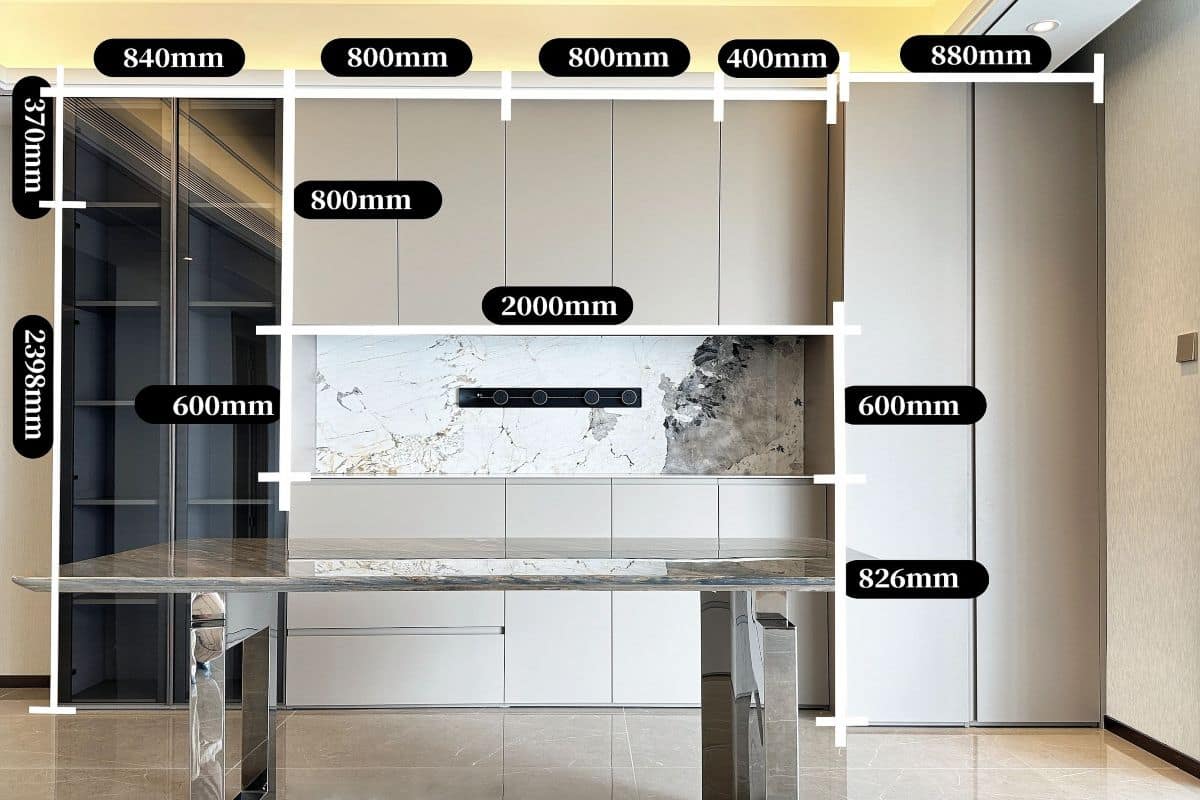
typically measures height: 72–84 inches (183–213 cm), width: 24–72 inches (60–183 cm), and depth: 20–24 inches (50–60 cm). Single wardrobes are usually around 2–3 ft. wide, while double and triple wardrobes range from 3–7.5 ft. wide. Standard wardrobe door dimensions are 18–24 inches for hinged and 24–36 inches for sliding doors.
When furnishing a bedroom or updating your existing storage, selecting the right wardrobe is essential. Beyond style and material, understanding standard wardrobe dimensions plays a crucial role in achieving both functionality and aesthetic balance. In the UK, wardrobes come in a variety of sizes and configurations, each tailored to different room layouts and user needs.
This guide breaks down the most common wardrobe sizes available in the UK, including measurements in feet, inches, and cm, so you can confidently plan your space whether you’re shopping off-the-shelf or commissioning a custom design. We’ll also look into wardrobe door dimensions, internal layouts, and how to choose based on your room’s characteristics.
Wardrobes in the UK typically follow a few standard size categories, particularly for pre-manufactured models. These can vary slightly by manufacturer, but they generally fall within the following ranges:
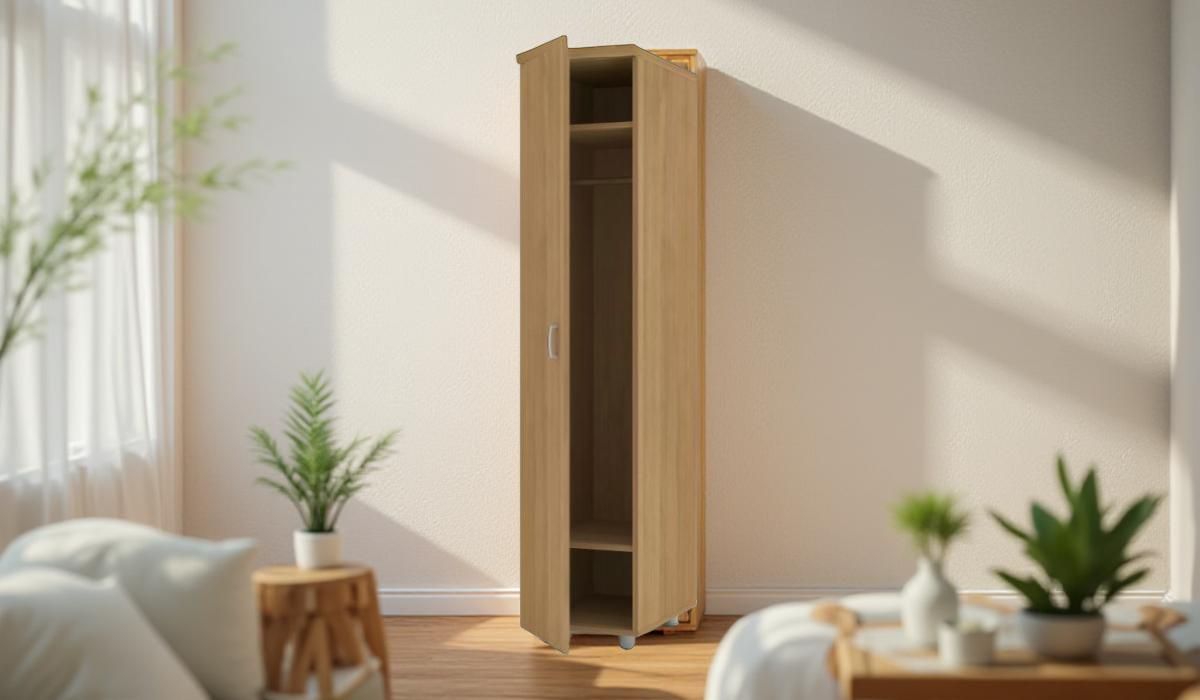
Single wardrobes are ideal for small bedrooms, guest rooms, or areas with limited space. They are usually designed for individual use and may include hanging space and a shelf.
In feet, that’s approximately:
These compact wardrobes often feature a single wardrobe door dimension between 18 and 24 inches wide, depending on whether the door is hinged or sliding.

The double wardrobe is one of the most popular options in British homes. It provides ample hanging space and is often combined with shelving or drawers.
In feet:
In inches, these can vary slightly, but most doors on a double wardrobe will be around 18 to 24 inches each if hinged. Sliding doors may be larger, often ranging from 24 to 30 inches.

For those with larger bedrooms or greater storage needs, triple wardrobes offer generous space. They typically accommodate a full section for hanging long clothes, another for short garments, and a third for folded items, shoes or drawers.
In feet, this translates to:
The wardrobe door dimensions here vary depending on the configuration. Three hinged doors might be evenly spaced around 20 to 24 inches each, while sliding variants can have fewer, larger doors for a seamless look.
Understanding the types of wardrobes available on the market can help you narrow down your options depending on your bedroom layout and storage requirements. Here are the most common types, along with their standard dimensions.
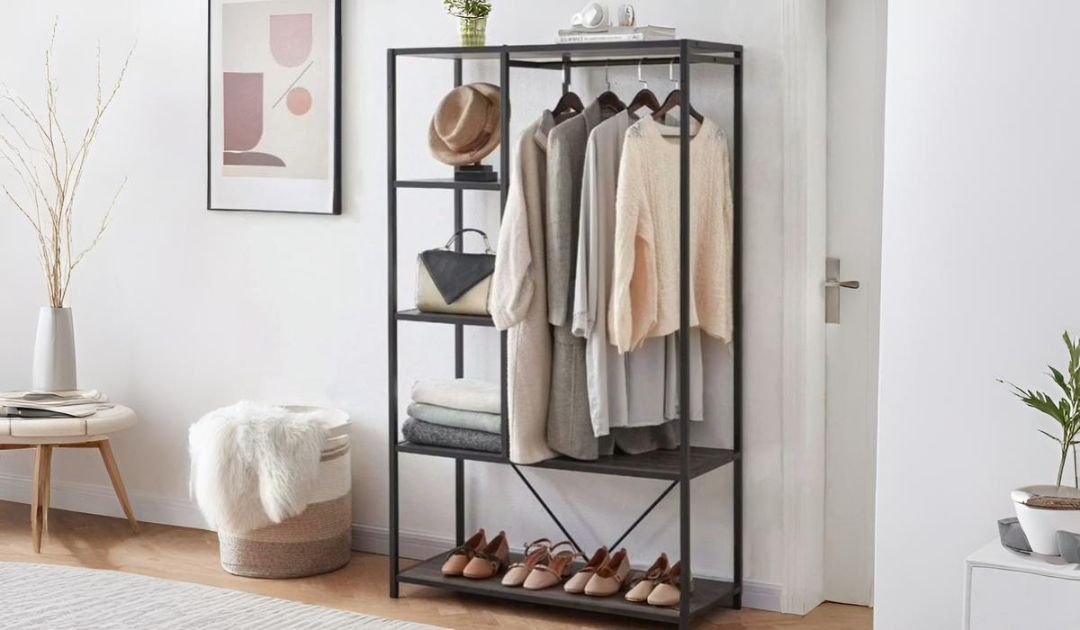
This is the most traditional type of wardrobe. It is movable, widely available in high-street and online furniture shops, and often budget-friendly.
Standard Dimensions:
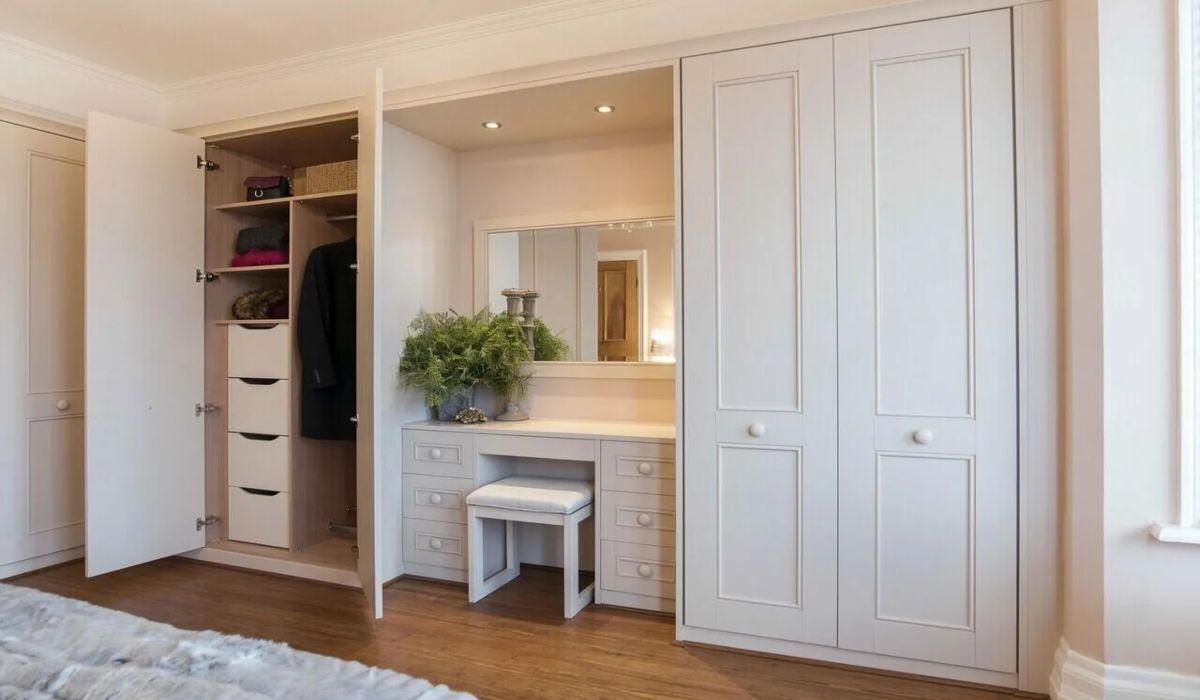
Built-in wardrobes are custom-made to fit specific spaces, making them perfect for rooms with unusual dimensions or where maximising vertical space is a priority.
Standard Dimensions (for guidance):
Built-ins allow for unique wardrobe sizes and internal features such as corner hanging rails, deep drawers, and hidden shelving.
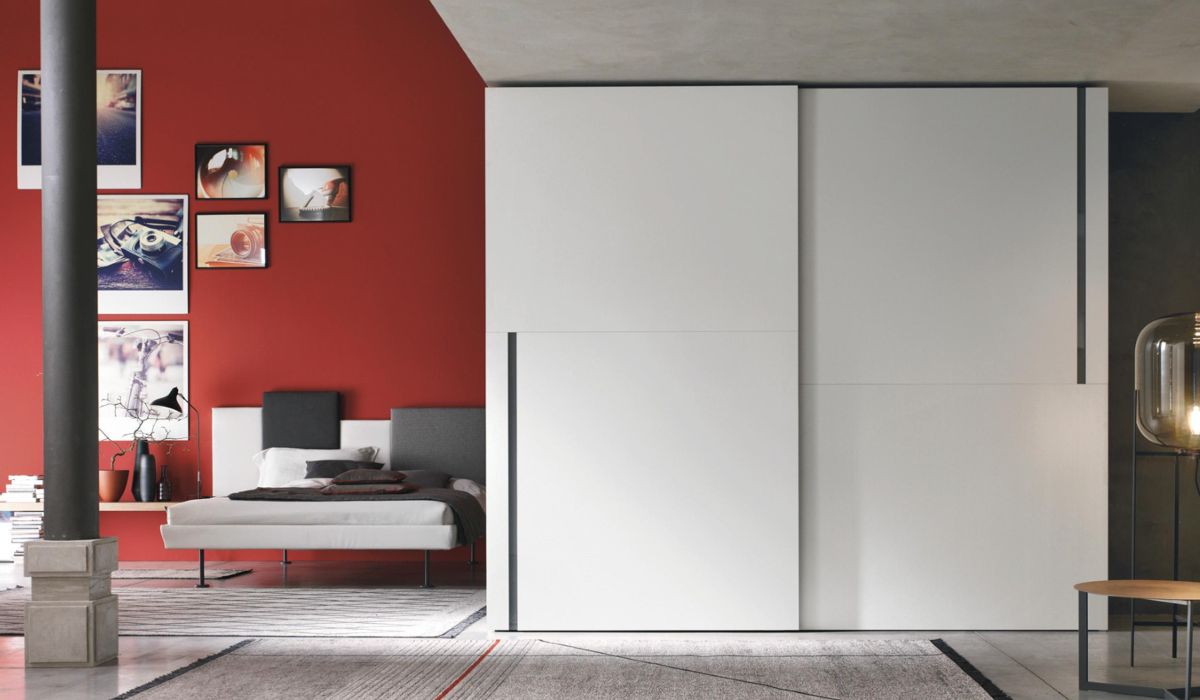
This is a modern, space-saving solution ideal for smaller rooms. Instead of opening outward, the doors slide sideways along a track.
Standard Dimensions:
Sliding wardrobes are often wider than hinged ones and come in 2-door, 3-door, or 4-door models.
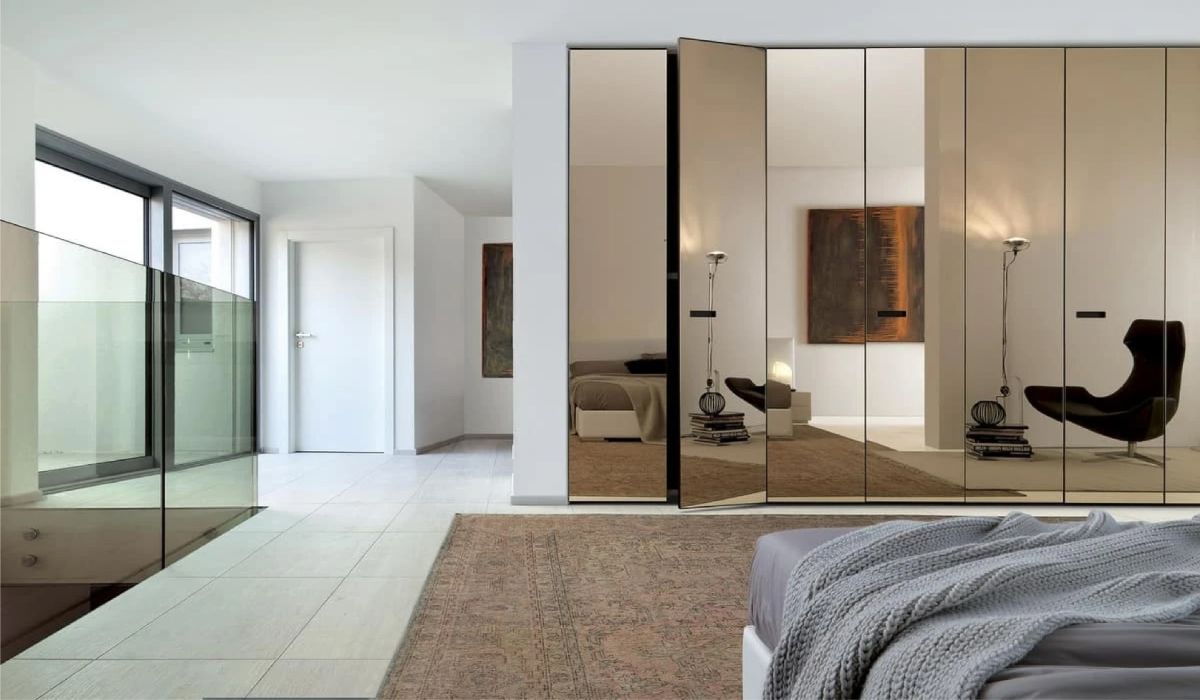
These wardrobes serve a dual purpose—offering storage and acting as a full-length mirror. They are often available as freestanding or sliding door types.
Dimensions match the sliding or freestanding categories, but the mirrored panels are usually the full height of the doors, typically:

A clever choice for awkward bedroom corners, this L-shaped design provides storage along two adjoining walls.
Typical Dimensions:
Height: 72 to 84 inches (183 to 213 cm)
Side Widths: 36 to 48 inches (91 to 122 cm) per wall
Depth: 20 to 24 inches (50 to 60 cm)
Corner wardrobes can be custom or flat-pack, and are popular in small bedrooms or studio flats.
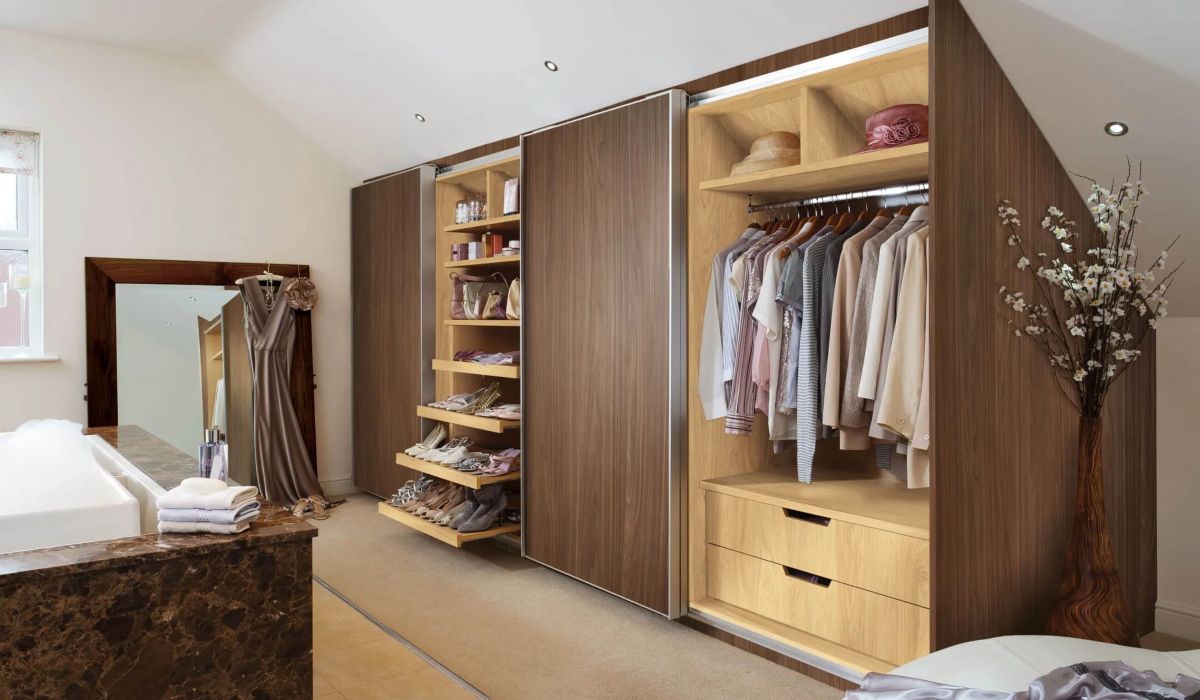
Many homeowners dream that walk-in wardrobes provide a dedicated space for clothes, shoes, and accessories. Although not a traditional “wardrobe”, the structure mimics a larger version of a built-in.
Minimum Room Dimensions:
This type is ideal for master bedrooms or converted dressing rooms.
Depth is often the most overlooked measurement when choosing a wardrobe, yet it’s critical to storage functionality. If the wardrobe is too shallow, your clothes will be squashed or won’t hang properly.
When measuring depth, always include space for door opening, especially with hinged doors. Sliding doors are space-saving and can better suit tighter areas.
Whether your wardrobe has hinged or sliding doors, knowing standard door dimensions is vital.
Hinged doors are more traditional and open outward, requiring clearance in front.
Sliding doors save space and are perfect for smaller bedrooms. However, they typically limit access to one side of the wardrobe at a time.
The external size of a wardrobe is just the beginning. What’s inside determines its true usability.
When measuring for a new wardrobe, always take the following steps:
Selecting the right wardrobe size is about more than just aesthetics—it’s about functionality, storage, and long-term convenience. By understanding standard wardrobe dimensions and how they translate in feet, inches, and cm, you’ll be better prepared to make a choice that perfectly suits your space.
Whether you opt for a compact single wardrobe, a wide sliding-door option, or a fully customised fitted unit, being informed on wardrobe sizes in the UK ensures your selection will meet both your spatial and practical needs.
Measure twice, choose wisely, and enjoy a tidy, well-organised bedroom that reflects both your style and lifestyle.
The standard wardrobe depth is typically 24 inches (60 cm). This allows clothes to hang freely without being squashed.
A standard double wardrobe usually ranges from 36 to 60 inches (91 to 152 cm) in width.
Yes, especially with built-in wardrobes. Many bespoke wardrobes are tailored to ceiling heights and room specifics.
Standard hinged wardrobe doors are 18 to 24 inches wide, while sliding doors can be 24 to 36 inches wide.
Not necessarily. Room sizes and ceiling heights can vary significantly, so it’s always best to measure your space before buying.
Weekly and Monthly Sales, Discounts & More!